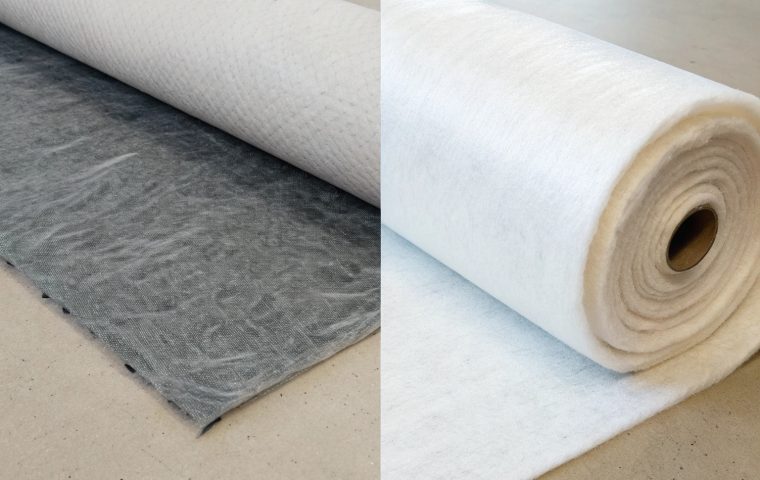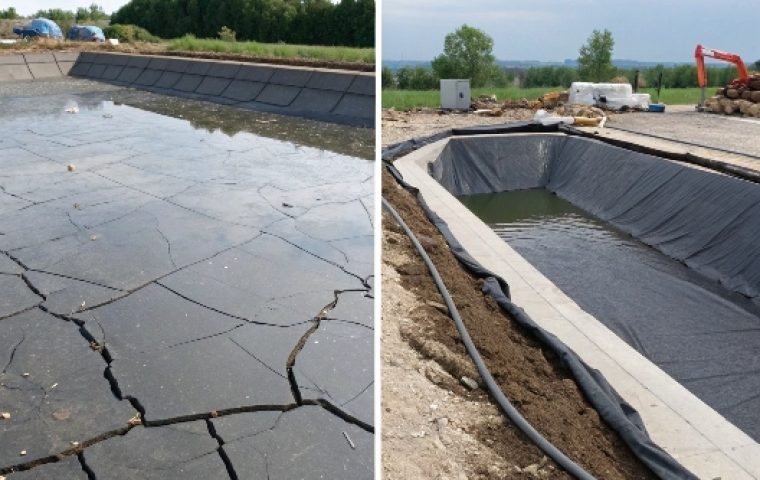Building a reservoir but worried about massive water loss? Seepage undermines your project’s efficiency, structural integrity, and profitability. A geomembrane lining system offers a modern, highly reliable solution.
A geomembrane reservoir is a water containment structure lined with an engineered synthetic polymer sheet. This liner works by creating a continuous, low-permeability barrier that is welded on-site, effectively stopping water from seeping into the ground and ensuring maximum containment.
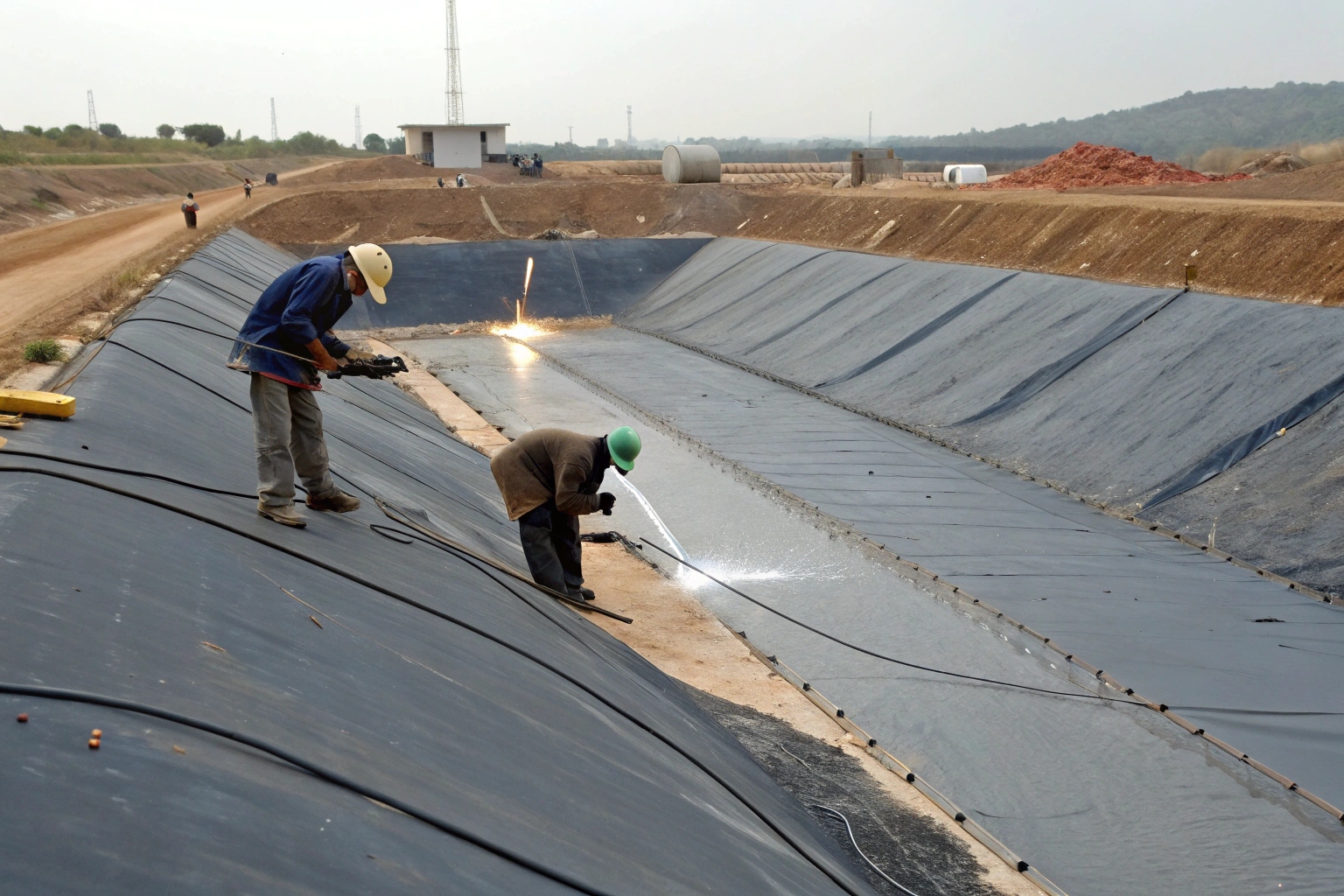
While the concept is straightforward, the engineering behind it is what makes geomembrane systems so effective for modern construction. To understand the value for your projects, it’s essential to look closer at the liner itself, how it ensures total waterproofing, and the long-term benefits it provides over traditional methods.
What exactly is a geomembrane reservoir liner?
The term "liner" sounds simple, but its technical specifications are crucial. Choosing the wrong material type or quality for your project’s specific needs can lead to costly premature failure.
A geomembrane reservoir liner is a factory-manufactured, impermeable polymer sheet, typically made from HDPE, LLDPE, or PVC. It is engineered to have extremely low hydraulic conductivity, acting as a continuous physical barrier that separates the stored liquid from the surrounding soil.
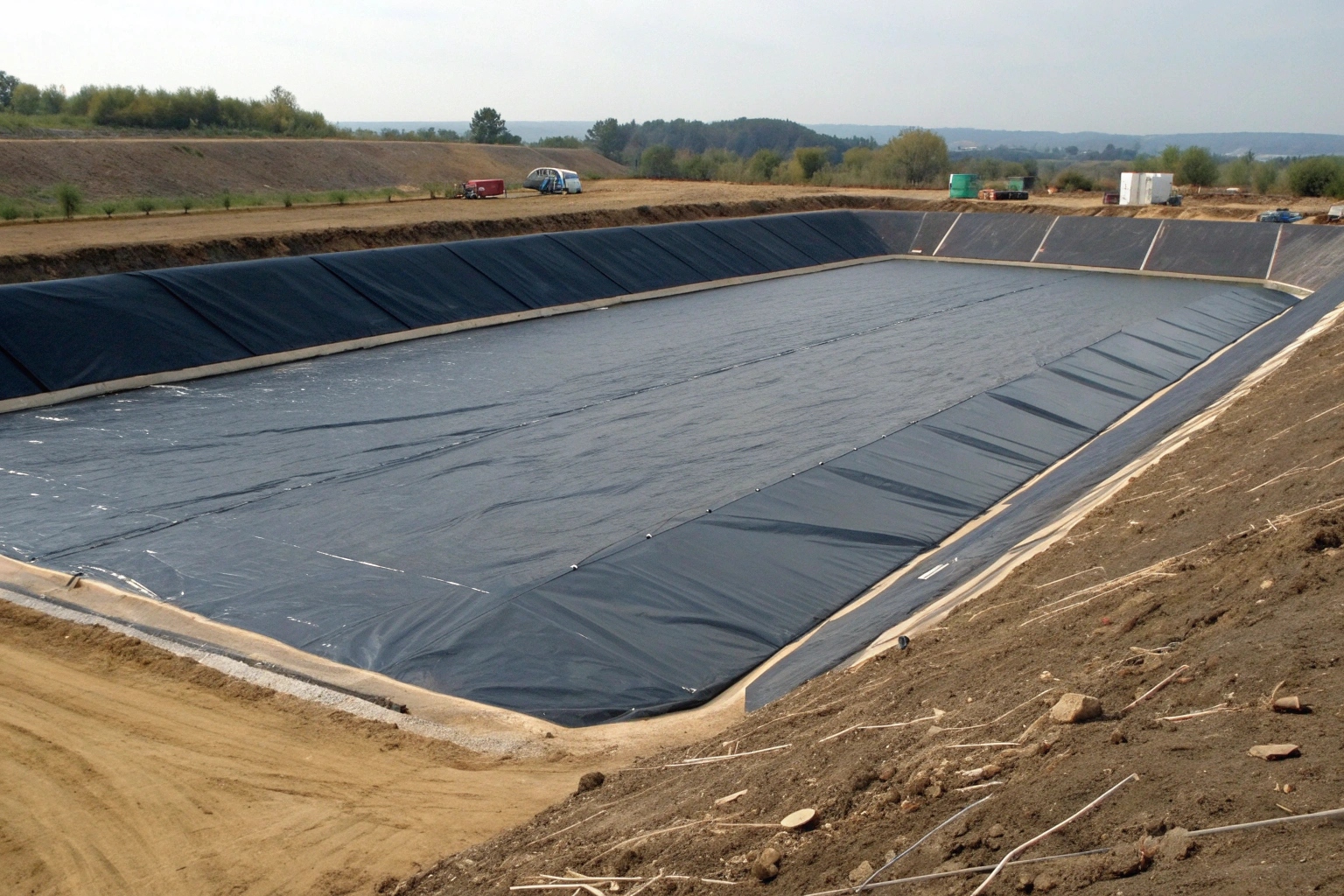
Unlike natural materials like compacted clay, a geomembrane is a highly engineered product with consistent, verifiable properties. This is a critical advantage for any project manager or importer who needs predictable performance. The material choice depends entirely on the project’s demands, from the liquid being stored to the subgrade conditions.
Common Geomembrane Liner Materials
| Material | Key Characteristics | Best For |
|---|---|---|
| HDPE | Rigid, excellent UV & chemical resistance. | Large-scale, exposed reservoirs (e.g., mining). |
| LLDPE | Flexible, high elongation, puncture resistant. | Ponds with irregular shapes or uneven subgrades. |
| PVC | Very flexible, conformable, cost-effective. | Smaller applications, buried liners, ornamental ponds. |
Choosing the correct polymer ensures the liner can withstand the mechanical, chemical, and environmental stresses of the site for its entire design life.
How does a geomembrane liner keep a reservoir waterproof?
A thin sheet of plastic holding back millions of liters of water can seem improbable. Any tear or faulty seam could mean failure, so how does the system guarantee a complete seal?
Waterproofing is achieved in two ways: first, the polymer material itself is virtually non-porous, blocking water at a molecular level. Second, large panels are thermally welded on-site, fusing them into one continuous, monolithic sheet that eliminates leaks at the joints.
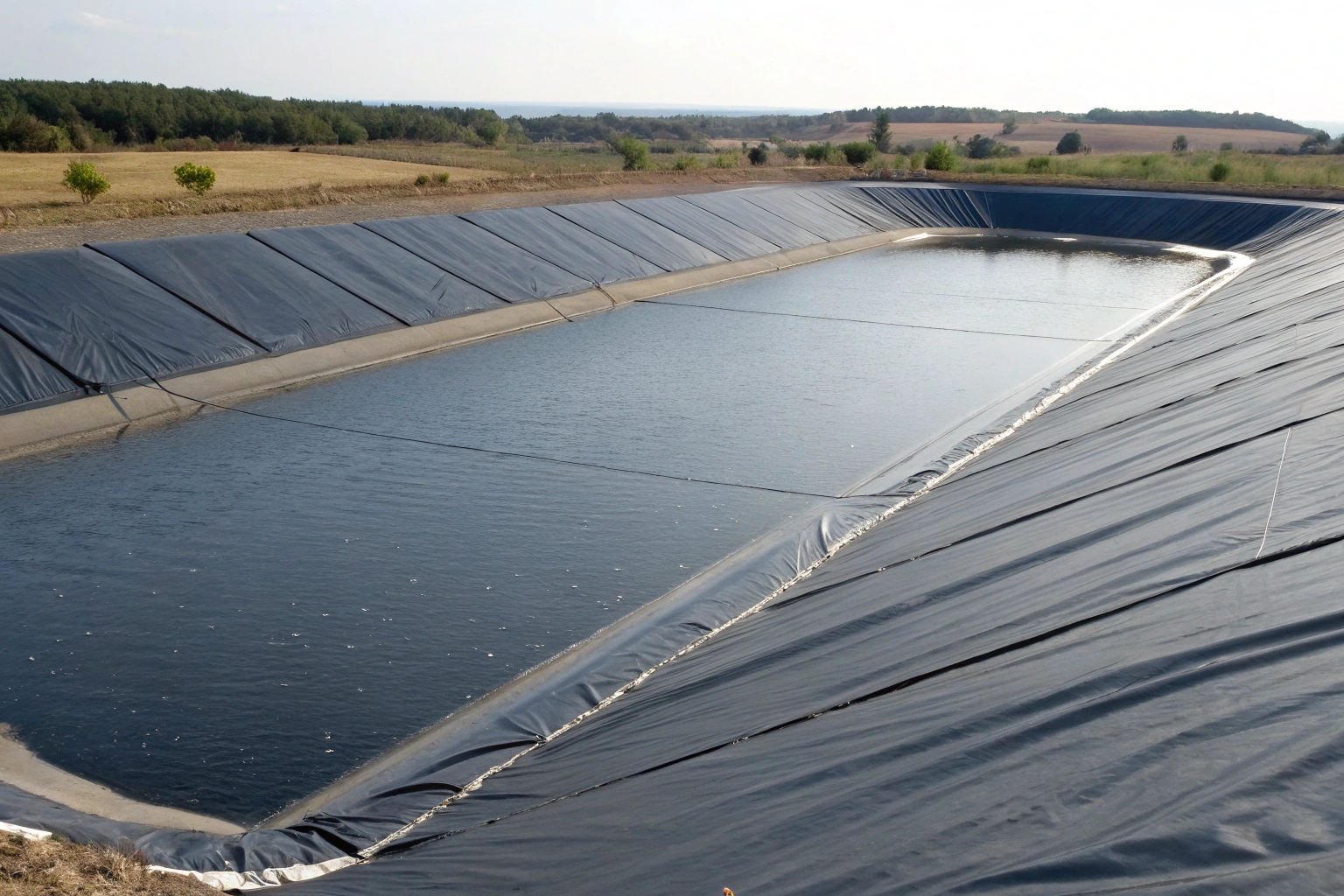
The integrity of a geomembrane system relies equally on its material science and expert installation. The combination of these two factors creates a barrier that is far superior to traditional methods.
The Two Pillars of a Watertight System
- Material Impermeability: Geomembranes have an extremely low hydraulic conductivity (around 10⁻¹³ cm/s). This means it would take centuries for a single drop of water to pass through an intact sheet. This inherent property provides the primary layer of defense against seepage.
- Seam Integrity: The seams are the most critical part of installation. Using techniques like hot-wedge or extrusion welding, the overlapping panels are melted and fused together under pressure. A properly executed weld is as strong and impermeable as the parent material itself. Quality control tests, such as air pressure testing of dual-track seams, verify that every inch of the weld is secure before the reservoir is filled.
What are the benefits of using geomembrane in reservoir construction?
Traditional reservoirs built with compacted clay are slow and expensive to construct. Weather delays and the inconsistent quality of natural materials can easily derail budgets and project timelines.
Geomembranes offer superior water containment, faster construction, and greater cost-effectiveness. They also save valuable space ("airspace") compared to thick clay liners and provide consistent, factory-controlled quality, reducing the risks associated with natural material variability.
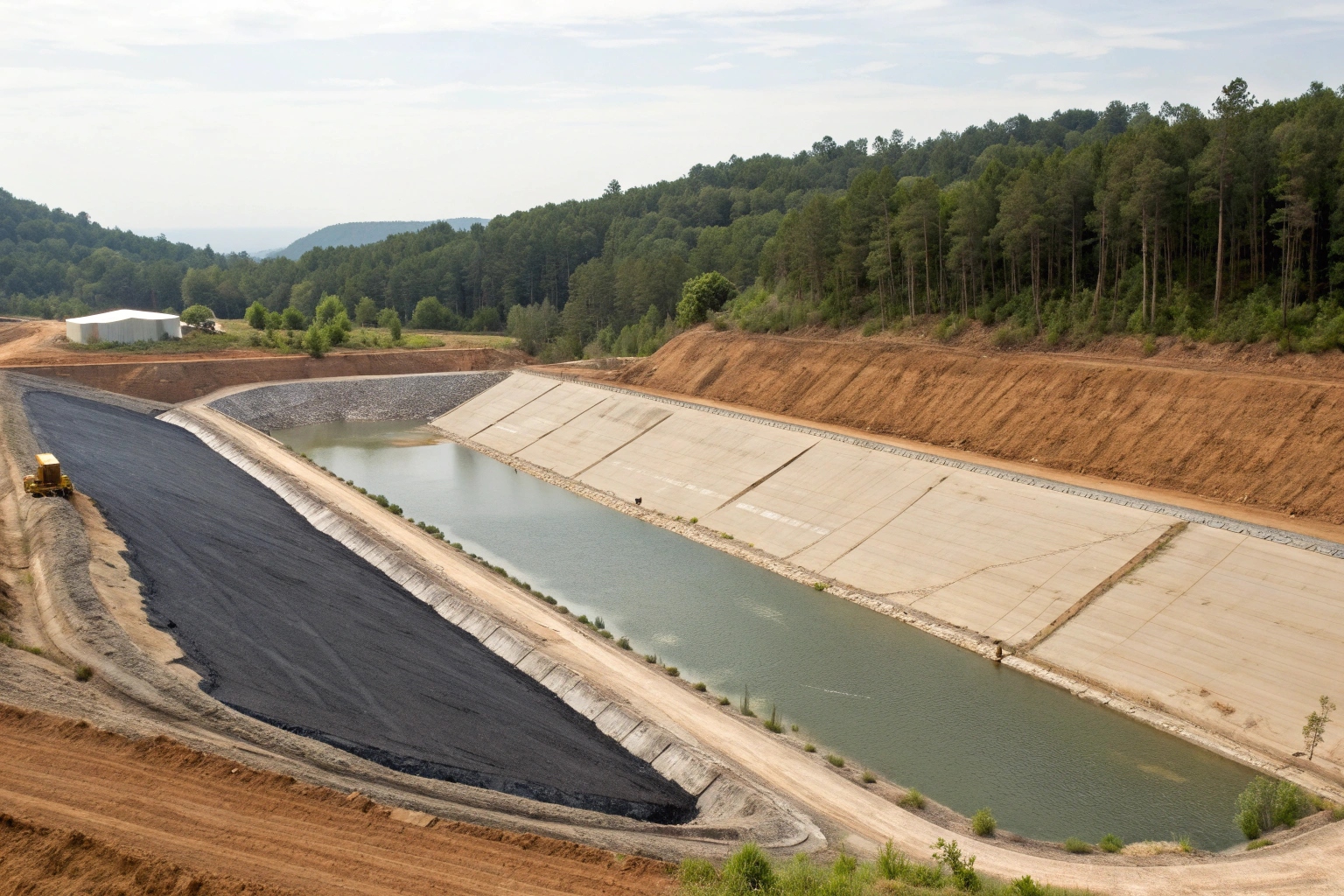
For importers, contractors, and project owners, switching to a geomembrane system translates into direct financial and operational advantages. It is a modern solution that replaces an art with a science, providing predictable and measurable results.
Key Advantages Over Traditional Clay Liners
- Space & Cost Efficiency: A 1.5mm geomembrane provides better seepage control than nearly a meter of compacted clay. This means less excavation, lower material transport costs, and more water storage capacity within the same footprint.
- Speed of Construction: Large, factory-fabricated panels can be deployed quickly. Welding is far less dependent on weather and soil moisture conditions than compacting clay, leading to significantly shorter construction schedules.
- Guaranteed Quality: As a manufactured product, geomembranes come with certifications and quality control documentation. This eliminates the guesswork and extensive on-site testing required to ensure the consistency of a clay liner.
Why should I choose geomembrane for long-term reservoir projects?
Short-term savings on a project can be tempting. However, choosing a less durable solution that fails after 10 years is not a saving at all; it’s a major liability.
Choose geomembranes for long-term reliability due to their high durability against UV radiation, chemical attack, and physical stress. Advanced systems, like double-liners with leak detection, offer unparalleled security, ensuring the reservoir’s integrity and value for decades with minimal maintenance.
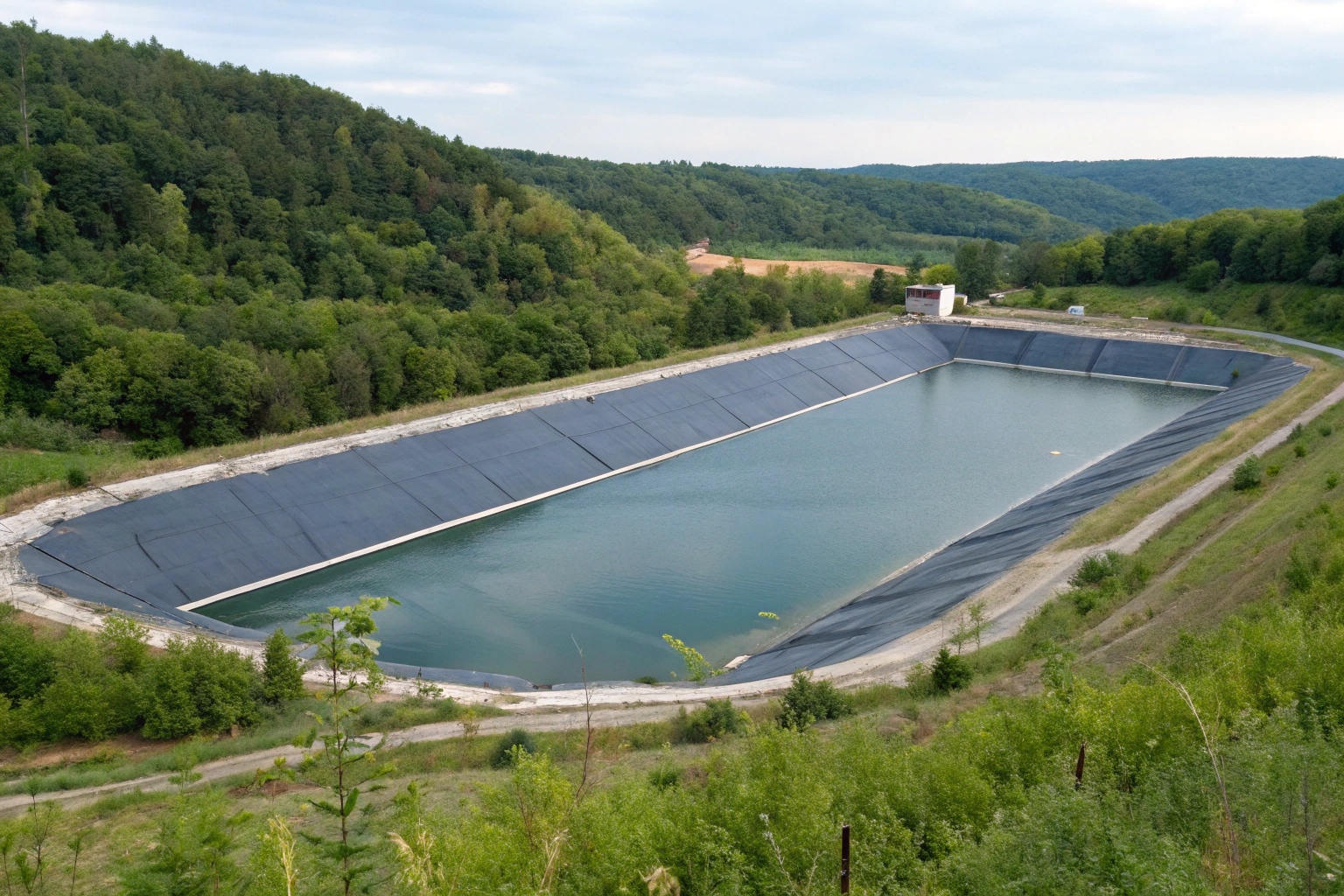
Investing in a geomembrane system is an investment in long-term asset security. These materials are specifically designed to withstand the harsh conditions of permanent exposure and containment.
Engineering for Longevity and Security
- Material Durability: High-quality geomembranes contain additives like carbon black that protect the polymer from UV degradation. They are also engineered to resist stress cracking and chemical attack, ensuring they don’t become brittle or break down over time.
- System Redundancy: For critical applications like potable water or industrial containment, a double-liner system provides ultimate security. It consists of two geomembrane layers separated by a drainage net. If the primary liner is ever breached, the leak is safely collected in the drainage layer and detected long before any environmental impact can occur. This makes monitoring and maintenance simple and proactive.
Conclusion
A geomembrane reservoir works by using an engineered, low-permeability liner and seamless welding to create a reliable waterproof barrier, offering superior long-term containment, efficiency, and project security.

